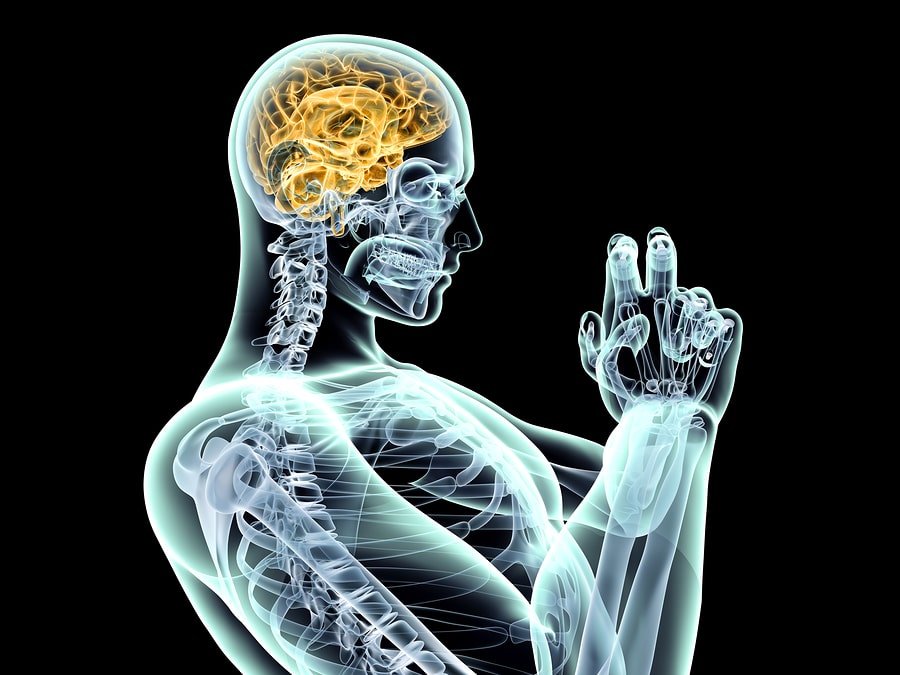
7,8-DHF is an investigational plant compound and a new nootropic. It has attracted a lot of attention in recent years because it targets a brain receptor that helps grow new neurons. Learn about its potential here.
What Is 7,8-Dihydroxyflavone?
7,8-Dihydroxyflavone (7,8-DHF) is a flavone found in plants. It was discovered while searching for molecules that imitate the function of brain-derived neurotrophic factor (BDNF) [1, 2].
BDNF promotes the growth of neurons and synapses (synaptogenesis) and is very important for normal brain function. Lower amounts of BDNF are observed in diseases such as depression, Alzheimer’s, Parkinson’s, and schizophrenia [1, 3, 4].
Studies in animals show that 7,8-DHF could potentially help with brain repair, long-term memory, depression, and neurodegenerative diseases. However, studies in humans have not yet begun [2].
Mechanism of Effect
7,8-DHF mimics the effects of brain-derived neurotrophic factor (BDNF) in brain cells by activating tropomyosin-related kinase B (TrkB) receptors, the typical target of BDNF [5].
The therapeutic potential of BDNF is restricted due to its short half-life (less than 10 minutes) and its inability to cross the blood-brain barrier because of its large size. Unlike BDNF 7,8-DHF is able to penetrate the blood-brain barrier and enter the central nervous system (CNS) [1].
7,8-DHF also increases the production of Nrf2. Nrf2 increases antioxidants enzymes such as heme oxygenase 1 (HO-1) and also enzymes that repair DNA (8-oxoguanine DNA glycosylase-1 – OGG1) [6, 7].
Antioxidant Activity
7,8-DHF rescues cells from damage and death caused by oxidative stress [8].
Cells do not need to have the TrkB receptor to be protected [8].
In this case, 7,8-DHF:
- Removed reactive oxygen species (ROS) [9].
- Increased Nrf2. This increases the production of several antioxidant enzymes [6, 7, 10].
- Increased glutathione (GSH), glutathione peroxidase (GPx), and superoxide dismutase (SOD) levels [11].
R13 in Alzheimer’s Disease
Because of the relatively low apparent bioavailability of 7,8-DHF (about 5% in mice), researchers are currently developing prodrugs that can be converted to 7,8-DHF once inside the body. The most promising of these is currently known as R13, which has eliminated plaques associated with Alzheimer’s disease in the brains of living mice [12, 13].
R13 has not yet been tested in humans, and we do not recommend using it until such studies are conducted.
Animal & Cell Research on 7,8-Dihydroxyflavone
No clinical evidence supports the use of 7,8,-DHP for any health condition, as all research thus far has been preclinical. Below is a summary of the existing animal and cell-based research, which should guide further investigational efforts. However, the studies listed below should not be interpreted as supportive of any health benefit.
1) Memory and Learning
7,8-DHF improved object recognition (a test used to determine learning and memory) in healthy rats when given immediately following and three hours after learning. It also improved memory in mice with dementia [14].
In rat models of post-traumatic stress disorder (PTSD), 7,8-DHF prevented stress-related memory impairment [15, 16].
7,8-DHF also improved memory in aging rats [17, 18].
2) Brain Repair
7,8-DHF promoted the repair of damaged neurons [19].
It also increased the production of new neurons in the brains of adult mice after brain injury and promoted neuron growth in aged mice [20, 21].
Similarly, 7,8-DHF, along with exercise, improved brain function in rats that experienced traumatic brain injury [22].
3) Neuroprotection
7,8-DHF protected against stroke-related brain damage in mice. The beneficial effect was more pronounced in females [11, 23].
7,8-DHF also prevented neuronal damage in mice after traumatic brain injury [24].
4) Inflammation
7,8-DHF decreased the release of inflammatory factors in brain cells by blocking NF-κB [25].
7,8-DHF also reduced the levels of inflammation-causing nitric oxide, prostaglandin E2 (PGE2), TNF-alpha, and IL-6 in macrophages (white blood cells) [26].
5) Neurodegenerative Disease
Alzheimer’s Disease
In animal models for Alzheimer’s disease, 7,8-DHF [27, 28, 29, 14, 30]:
- Reduced amyloid plaque formation
- Reduced oxidative stress
- Prevented loss of synapses
- Prevented memory deficits and preserved cognitive function
However, another study found no benefits in treating mice with Alzheimer’s-like brain damage with 7,8-DHF [31].
Parkinson’s Disease
7,8-DHF improved motor function and prevents the loss of dopamine-related neurons in a mouse model of Parkinson’s disease [32, 33, 34].
It also prevents the death of dopamine-sensitive neurons in monkey models of Parkinson’s disease [35].
Huntington’s Disease
7,8-DHF delayed the motor and cognitive impairment and prolonged survival in a mouse model of Huntington’s disease [36, 37].
Amyotrophic Lateral Sclerosis (ALS)
7,8-DHF improved motor deficits and neuron survival in a mouse model of ALS [38].
Multiple Sclerosis
7,8-DHF reduced disease severity in a mouse model of multiple sclerosis [39].
Schizophrenia
7,8-DHF decreased cognitive deficits and improved learning and memory in rat models of schizophrenia [40].
Infections in pregnancy and subsequent abnormal brain development can increase the risk of schizophrenia in offspring. Early use of 7,8-DHF decreased behavioral abnormalities and psychosis in mice offspring at risk of developing a schizophrenia-like disorder [41, 42].
Down Syndrome
In a mouse model of down syndrome, early intervention with 7,8-DHF increased the production of new neurons (hippocampus) and improved learning and memory [43].
Fragile X Syndrome
Fragile X syndrome is a genetic condition. It causes a range of developmental problems including cognitive impairment and learning disabilities.
In a mouse model of fragile X syndrome, 7,8-DHF improved cognitive function and reduced spine abnormalities [44].
Rett Syndrome
Rett Syndrome is a non-inherited genetic brain disorder, mainly affecting girls. Symptoms include unusually slower growth, difficult coordination control, and language issues.
7,8-DHF improved symptoms in a mouse model of Rett syndrome [45].
6) Depression
7,8-DHF improved depression in mice that experienced social defeat [46].
It also reduced depressive behaviors in rodents experiencing chronic stress [47, 48].
7) Addiction
7,8-DHF decreased abnormalities in behavior and dopamine transport in mice on METH (methamphetamine) [49, 50].
7,8-DHF also reduced the rewarding effects of cocaine in mice [51].
8) Obesity
7,8-DHF reduced fat production and fat build-up by increasing antioxidant enzymes and neutralizing reactive oxygen species (ROS) [52].
In mice on a high-fat diet, 7,8-DHF increased muscle AMPK levels, increased whole-body energy expenditure, reduced fat, and improved insulin sensitivity [53].
Obesity in pregnancy can negatively impact the child via the placenta. 7,8-DHF improved placental characteristics and may, therefore, help decrease the negative effects of obesity in pregnancy [54].
9) Blood Pressure
When injected into rats with elevated blood pressure, 7,8-DHF caused an acute blood pressure reduction. When administered orally, there was still a decrease, but it was less pronounced [55].
10) Skin Aging
7,8-DHF decreased inflammation, increased collagen production, and increased antioxidant enzyme levels in aged human skin cells [56].
Cancer Research
7,8-DHF killed oral squamous cancer cells and skin cancer (melanoma) cells in dish studies; the potential relevance of such studies is unknown [57, 58].
Side Effects & Precautions
Due to a lack of human studies, the potential side effects of 7,8-DHF are unknown. However, users have anecdotally reported:
- Overstimulation
- Restlessness
- Dizziness
- Nausea
- Irritability
- Trouble sleeping
Drug Interactions
The possible drug interactions of 7,8-Dihydroxyflavone are unknown.
To avoid adverse effects and unexpected interactions, talk to your doctor before using 7,8-DHF.
Supplement Forms and Dosage
7,8-DHF can be purchased as capsules/pills, or powder.
There is no safe and effective dose of 7,8-DHF because no sufficiently powered study has been conducted to find one. The most common dosage in commercially available supplements is 10 – 30 mg per day.


